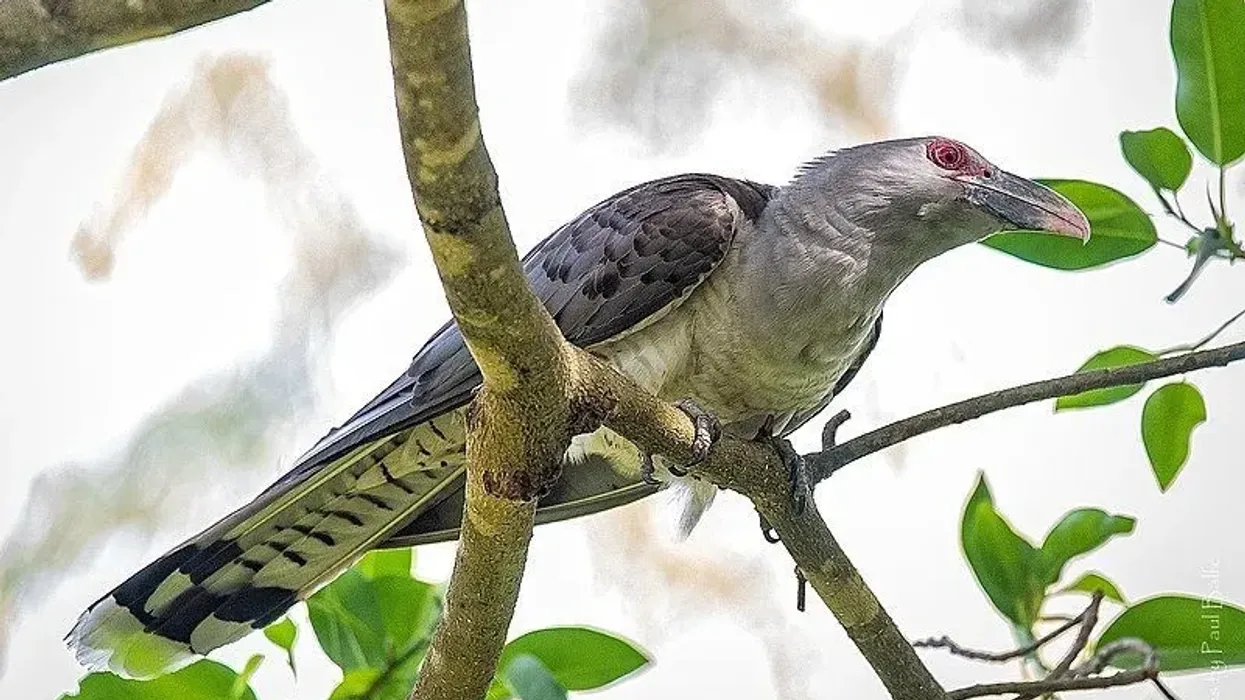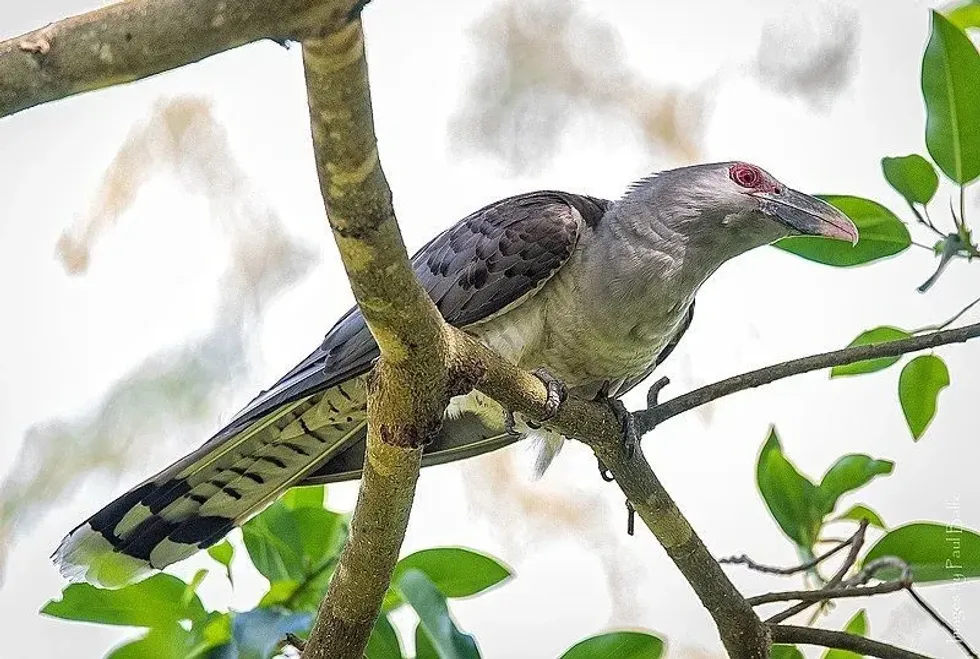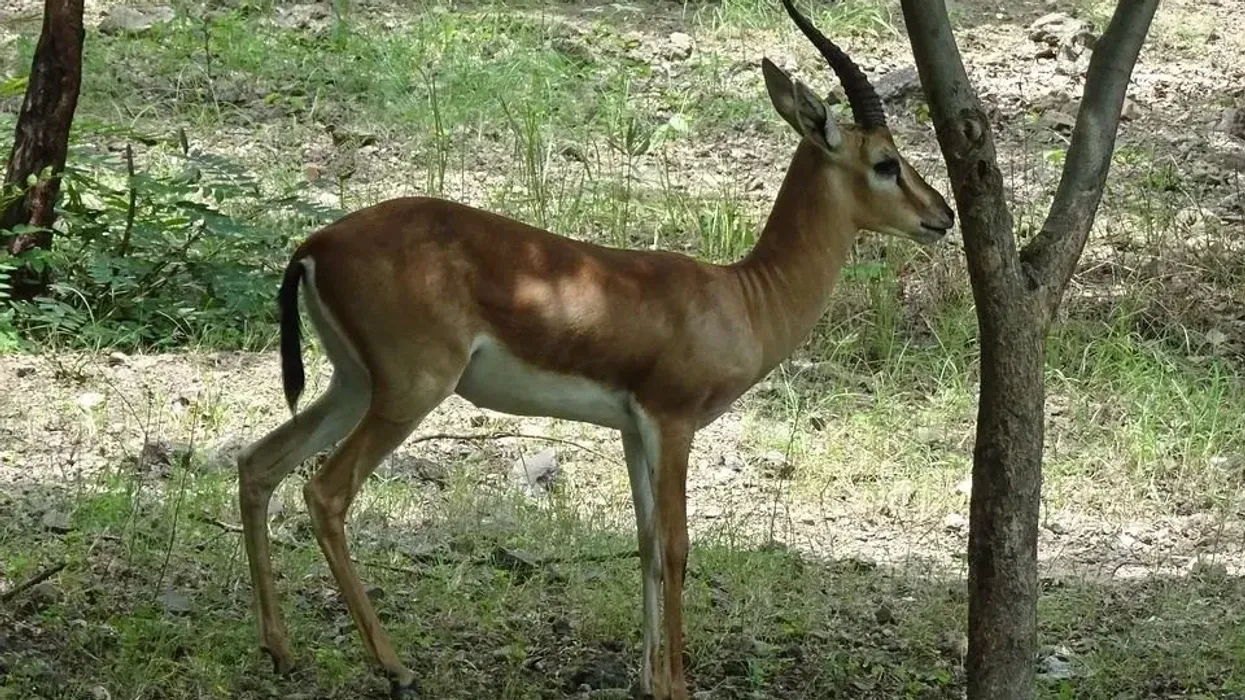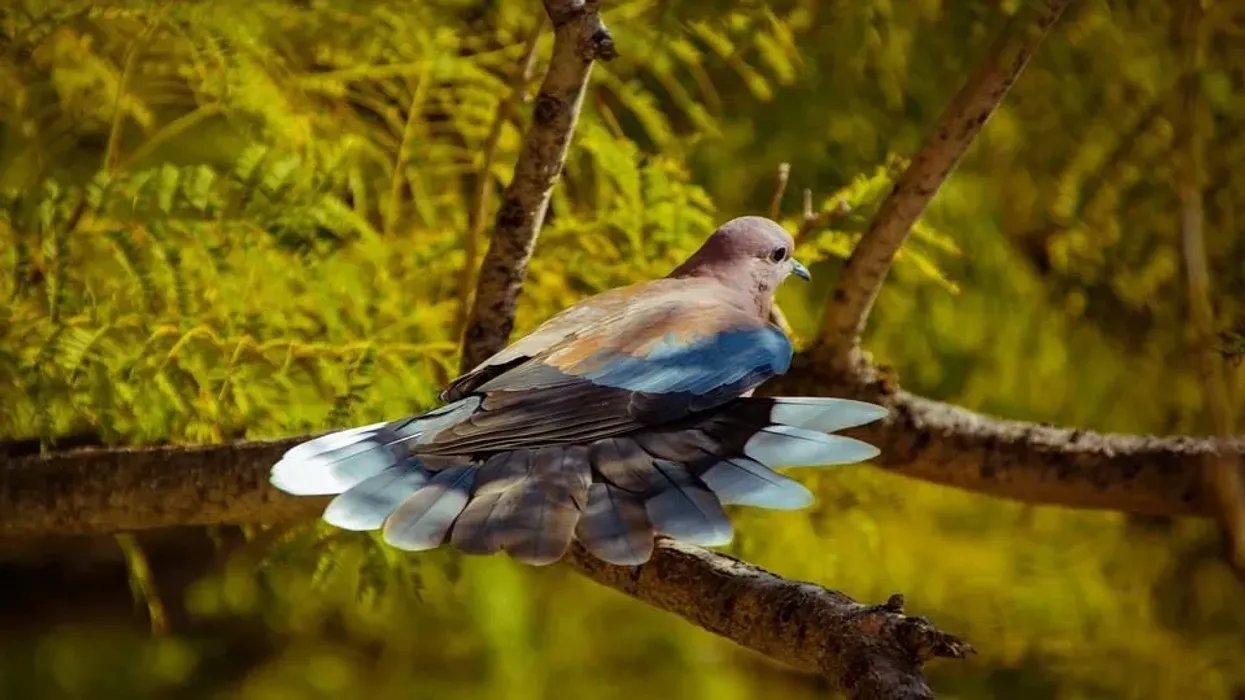If you enjoy birdwatching, keep an eye out for the storm bird the next time you go out! The largest cuckoo species and brood parasite in the Cuculidae family is the channel-billed cuckoo, often known as the storm bird.
Because of their powerful calls, these birds are tough to overlook. This interesting bird is parasitic which means that the female cuckoo will lay its eggs in the nest of another bird while the male cuckoo distracts the owners.
In the spring, the storm bird is reported to migrate from New Guinea and Indonesia to eastern and western Australia. They leave in February or March when the breeding season is done. Even though they are not nocturnal, they can be rather noisy during the breeding season by repeatedly shouting out during the night.
This parasitic bird is found to live in tropical lowlands and subtropical mangroves. Sulawesi, Bismarck Archipelago, and Flores are all homes to these bird species.
Their population ranges and distributions have remained constant since the IUCN designated them as Least Concern. They are not in any danger.
Given that they belong to the cuckoo family, you would think they'd enjoy eating insects. This brood parasite, on the other hand, is a little different.
They eat a variety of foods, although fruits make up the majority of their diet. As a result, their dietary habits are very similar to those of eastern koels.
Native figs, eucalyptus tree seeds, and black mulberries make up the fruit diet. At the same time, they also feed on a wide range of invertebrates and eggs or chicks of other small birds too!
If you are interested to discover more facts on cuckoos, then check out our yellow-billed cuckoo fun facts for kids or black-billed cuckoo interesting facts that you're sure to enjoy!
Channel-Billed Cuckoo Interesting Facts
What type of animal is a channel-billed cuckoo?
The channel-billed cuckoo is said to be a brood parasite bird that relies on other bird species to look after its young ones. They often lay their eggs in the nest of the target host and may even go to the extent of removing the existing eggs before laying their own.
What class of animal does a channel-billed cuckoo belong to?
This channel-billed cuckoo Scythrops novaehollandiae belongs to the class of birds.
How many channel-billed cuckoos are there in the world?
The actual number of these birds is unknown, but their population size and range are unconcerned because they are classified as Least Concern by the IUCN. As a result, their global distribution and range are quite steady.
Where does a channel-billed cuckoo live?
These birds are quite common in New Guinea and Indonesia. They migrate down to northern and eastern Australia and then leave around the month of February or March. These birds are permanent residents of the countries of Flores, Bismarck Archipelago, and Sulawesi.
What is a channel-billed cuckoo's habitat?
The habitat of these birds is tropical lowlands and subtropical mangroves. Channel-billed cuckoos are shy birds. This is why they frequently sleep and feed on treetops where other target hosts can also be found.
Who do channel-billed cuckoos live with?
These birds, that migrate to northern and eastern Australia from New Guinea and Indonesia, are diurnal. This means that they are active in the mornings and sleep at night. They are a species that spend the majority of their life alone and only come together in pairs to breed during the mating season.
How long does a channel-billed cuckoo live?
The channel-billed cuckoo, like all other cuckoo species, lives in the wild for roughly four to six years.
How do they reproduce?
This cuckoo bird's mating ritual is quite fascinating.
Giving gifts to their partners in the form of food can be described as this. During the breeding season, they are very vociferous and loud in their calls.
The adult male and female collaborate to either attack the nest's incubating bird or provoke the nest's hosts.
While the male is distracting the host, his mate sneaks in and deposits her eggs, sometimes pushing off the host's eggs from the nest before laying her own.
Unlike many other cuckoos, the channel-billed cuckoo's chicks do not evict the other host eggs or kill the host's babies when they hatch, but they rarely survive since the cuckoo chick has control on the food source.
Within four weeks, the chicks are completely feathered and leave the nest to scramble around on the branches, however, they are fed by the host parents for a few weeks after fledging.
What is their conservation status?
The IUCN has listed this cuckoo species as Least Concern and their populations are quite stable around the world and the channel-billed cuckoo does not face any threats.
Channel-Billed Cuckoo Fun Facts
What do channel-billed cuckoos look like?
This billed cuckoo is a huge gray bird. The largest species in the family, the channel-billed cuckoo, also has the largest bill, which resembles a hornbill's. Its eyes are also covered in red splotches.
Most notable about the channel-billed cuckoo's physical appearance is its extremely barred long tail. They are darker on the back and wings. When flying with its wings spread wide, it resembles a cross in the sky.
How cute are they?
These are not really cute. The channel-billed cuckoo is rather plain and dull with its overall gray plumage. The loud calls of this billed bird are also very shrill and almost irritable.
How do they communicate?
There is something fascinating about the channel-billed cuckoo call, a loud 'kawk' followed by a faster and weaker 'awk-awk-awk', which is as distinct as the bird's appearance. The channel-billed cuckoo sound is made while perched, but it is most often made while flying.
How big is a channel-billed cuckoo?
These parasitic birds are quite large. They range in length from 22-28 in (55.8-71.1 cm). These cuckoos are around the size of a hawk. Hence why, since this bird is also particularly fond of native figs, they go by the name fig hawk as well!
How fast can a channel-billed cuckoo fly?
The cuckoo's actual flight speed is unknown, however, they are swift and have an astounding cross-like silhouette while in flight with their back and wings spread out.
How much does a channel-billed cuckoo weigh?
The weight of the channel-billed cuckoo is around 1.2-2.0 lb (544.3-907.1 g).
What are the male and female names of the species?
There are no male or female names for these cuckoo birds.
What would you call a baby channel-billed cuckoo?
The baby-billed cuckoos are called chicks.
What do they eat?
Cuckoos eat worms, beetles, caterpillars, native figs, seeds, and the eggs of smaller species like the magpie bird, among other things.
Are they rare?
This species of cuckoos are not rare at all. Given their Least Concern conservation status, their distributions face no threats and they are quite stable in their population all over the world.
Would they make a good pet?
In terms of keeping them as pets, they would not do well. This is because the cuckoo species are all wild birds and at the same time, they are shy and obtrusive. They are known for their loud and shrill calls. These features do not make them thrilling or exciting to be kept as pets at home.
Did you know...
This billed cuckoo is also called a 'storm bird' because their migration falls in line with the rainy seasons. Therefore, the local people have started using this term to refer to them.
What is the call of the channel-billed cuckoo?
This call of this cuckoo is known to be very loud especially during the nights of the breeding season, although they are not nocturnal. The call is more of 'kawk' sound and it gradually moves into a fast yet weak sound.
Comparison with other cuckoos
The channel-billed cuckoo is the largest cuckoo compared to all other cuckoo species and unlike other birds of the same feather who prefer insects, they portray a special liking for native figs and fruits over insects.
Here at Kidadl, we have carefully created lots of interesting family-friendly animal facts for everyone to discover! For more relatable content, check out these kestrel bird facts and bowerbird facts for kids.
You can even occupy yourself at home by coloring in on one of our free printable channel billed cuckoo coloring pages.










